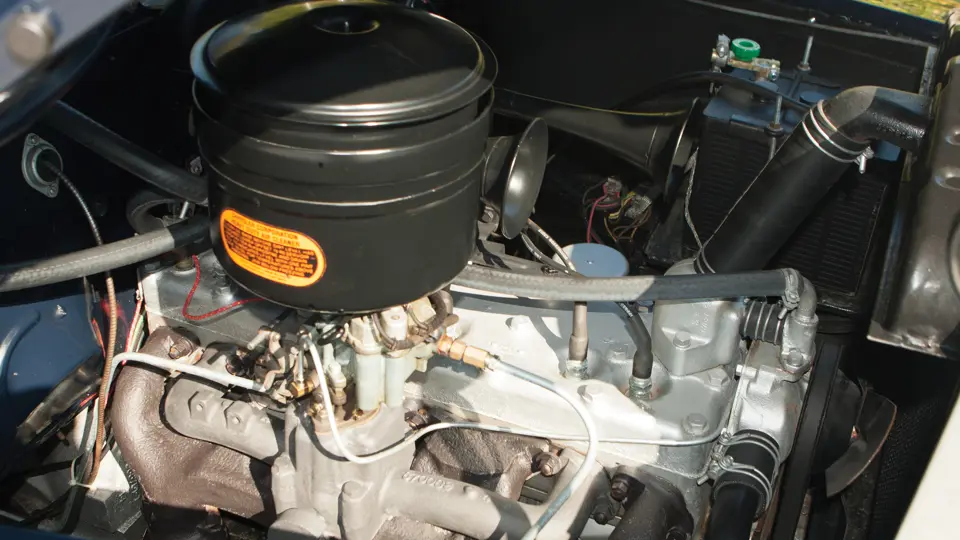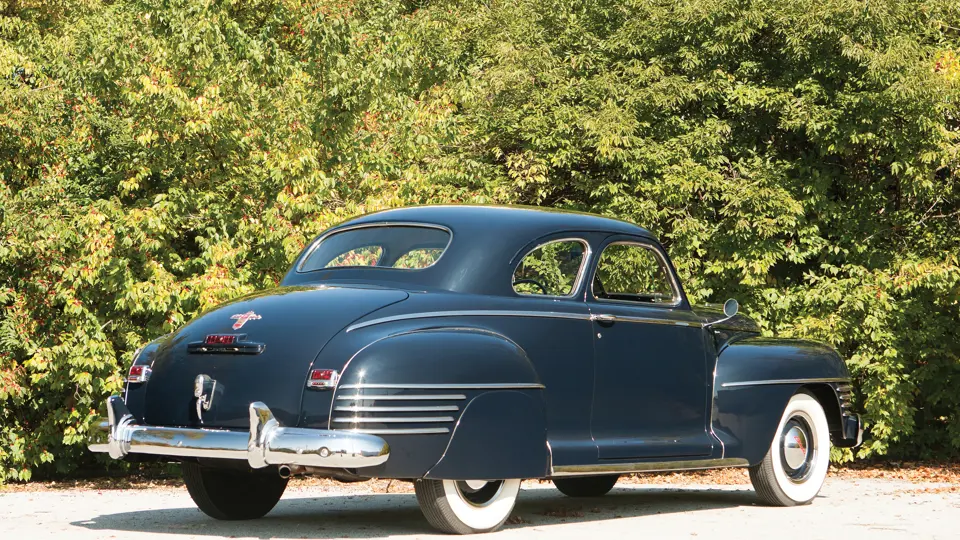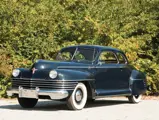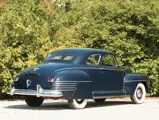Model C34. 120 bhp, 250.6 cu. in. L-head inline six-cylinder engine, three-speed manual transmission with Fluid Drive, coil-spring independent front suspension, live rear axle with semi-elliptical leaf springs, and four-wheel hydraulic drum brakes. Wheelbase: 121.5 in.
As Americans abandoned rumble seats for indoor comfort, automakers began to offer occasional rear seats in their coupe models. Many of these were of the drop-down “opera seat” variety, with some forcing the passenger to sit sideways. Chrysler Corporation broke new ground in 1939 with a special body style built by Hayes Body Corporation, of Grand Rapids, Michigan. This body style, called the “club coupe,” was also offered by DeSoto and Dodge, and it had a full-width front-facing rear seat.
The “Hayes Coupe” was offered for only one year, but the seating pattern won immediate acclaim, so, from 1940 on, a club coupe with seating for six was part of the Chrysler line. The three-passenger business coupe used the same body, with a large cargo space in place of the seat. The club coupe appeared in all Chrysler series except Imperials, and it carried forward into the abbreviated 1942 model year.
Auto sales surged in 1941, as clouds of war gathered in Europe. Sensing that auto manufacture might be suspended if the United States became involved, consumers bought new cars when and if they could. Their predictions were confirmed on December 7, 1941, with the bombing of Pearl Harbor. Pre-war contingency planning then turned to war production, and all new car manufacture was halted by February 1942. As a result, production of the club coupe, which exceeded 22,000 in 1941, fell to just 3,919 in the 1942 model year, with 1,713 of them being Windsors, the more highly trimmed of six-cylinder Chryslers.
This 1942 Windsor Club Coupe is attractive in deep blue and fully equipped with Fluid Drive, a radio, a heater, an electric clock, whitewall tires, wheel trim rings, rear fender skirts, and dual exterior mirrors. The cloth upholstery matches, as do the carpets and dashboard plastic. The brightwork is all very good quality, and the engine compartment is superbly detailed.
The 1942 Chryslers featured a new full-width, thin-bar grille, which set them apart from earlier and later models, particularly the post-war cars, which adopted a very heavy-set mesh grille. The beauty of its design and the quality of its restoration, combined with its rarity, make this an extraordinarily desirable car.
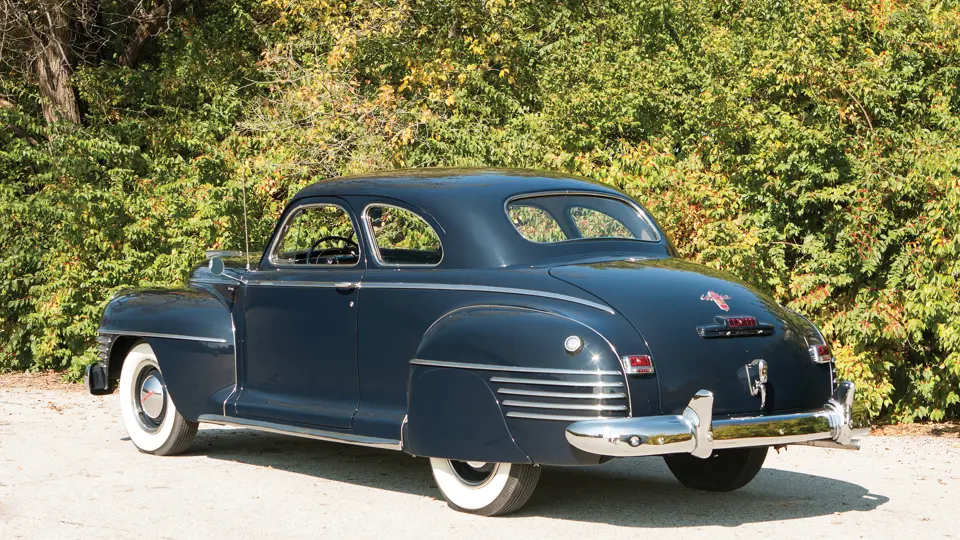



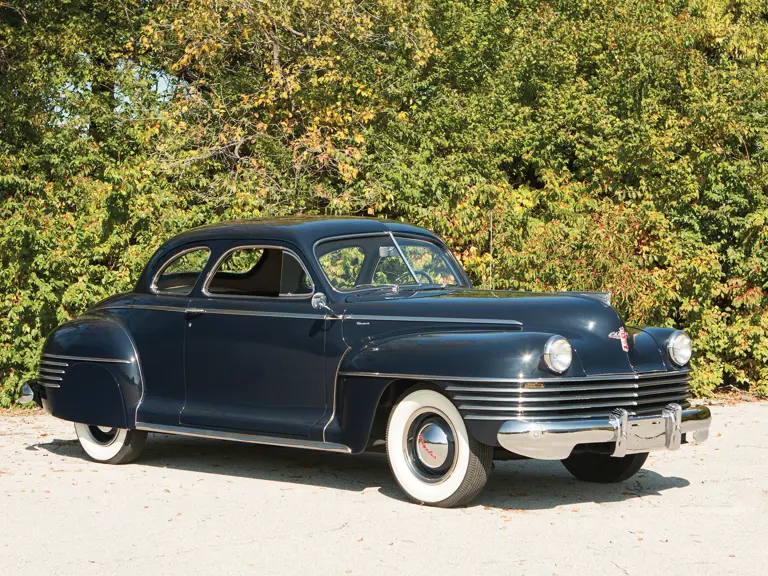

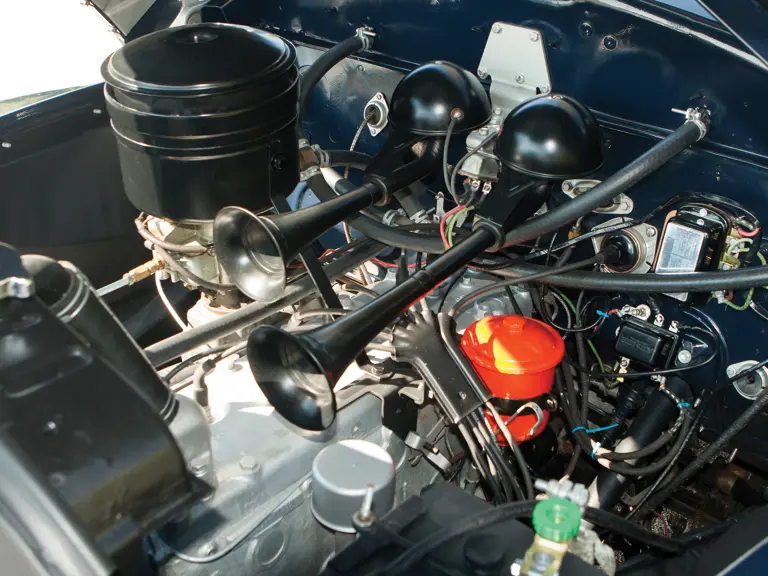

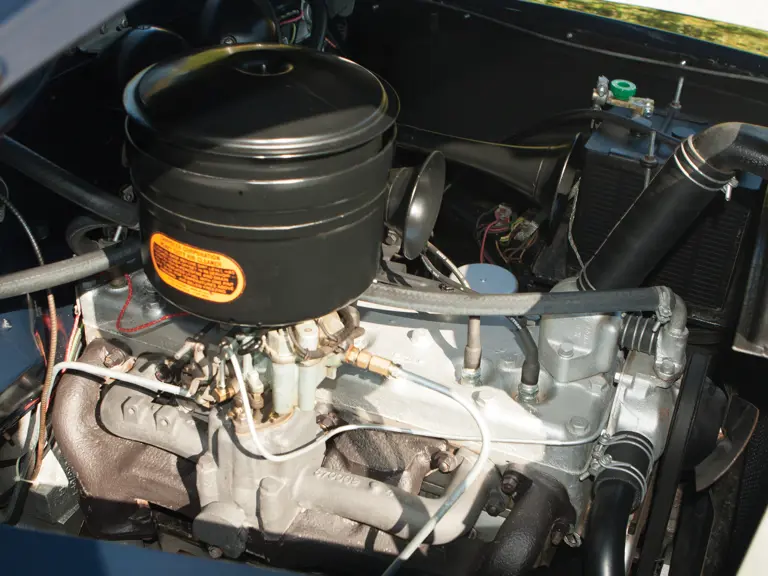
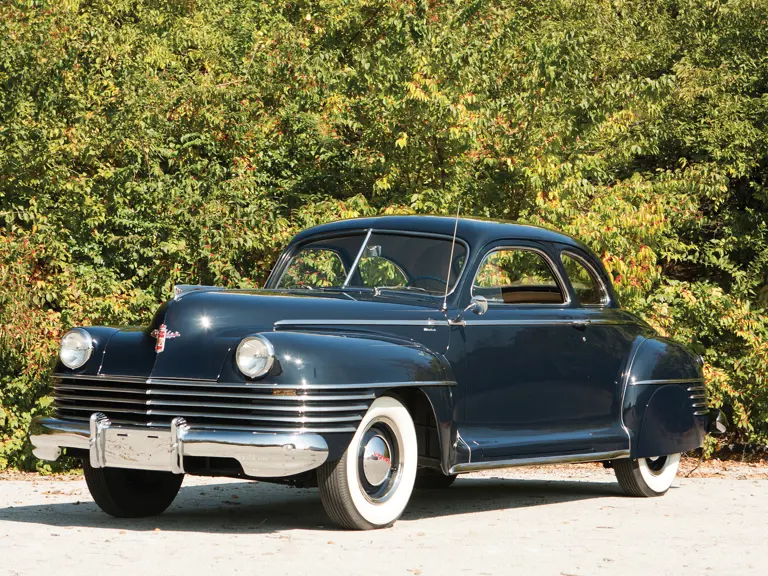
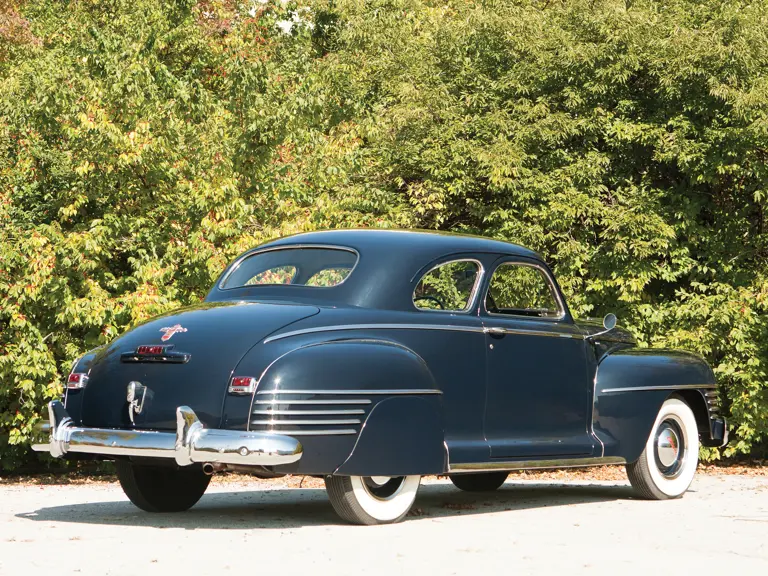
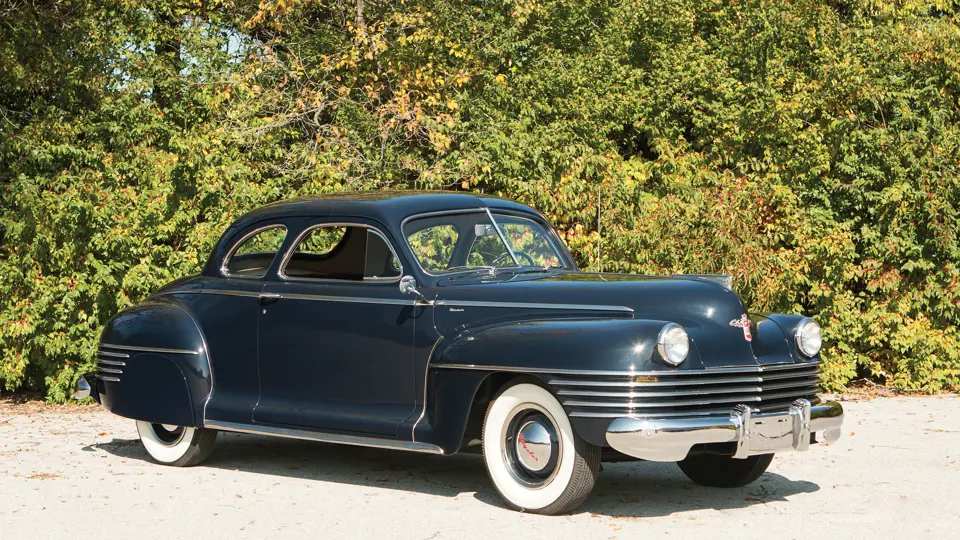
 | Hershey, Pennsylvania
| Hershey, Pennsylvania
